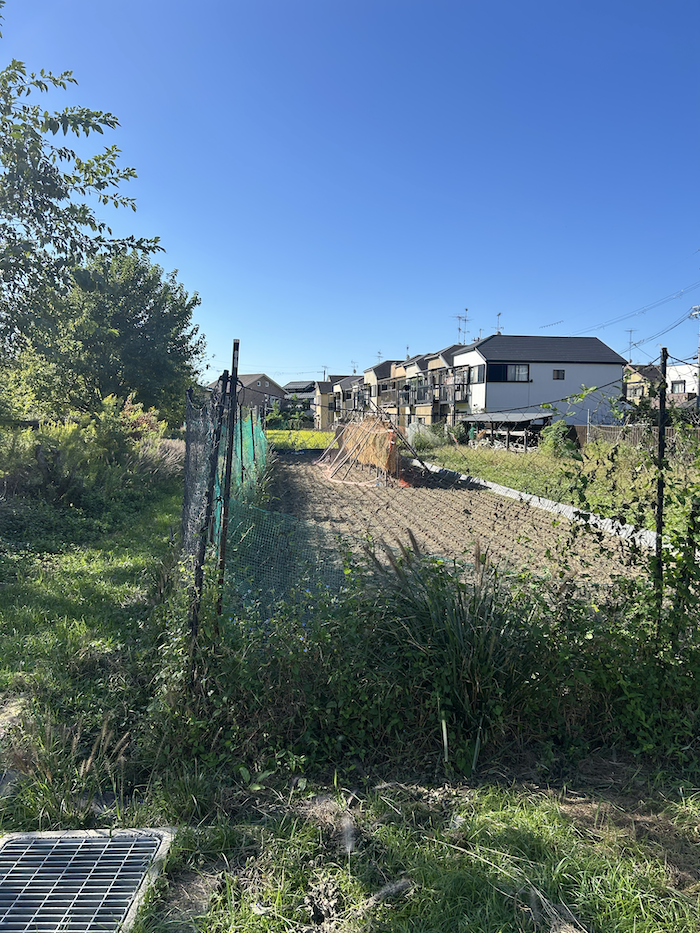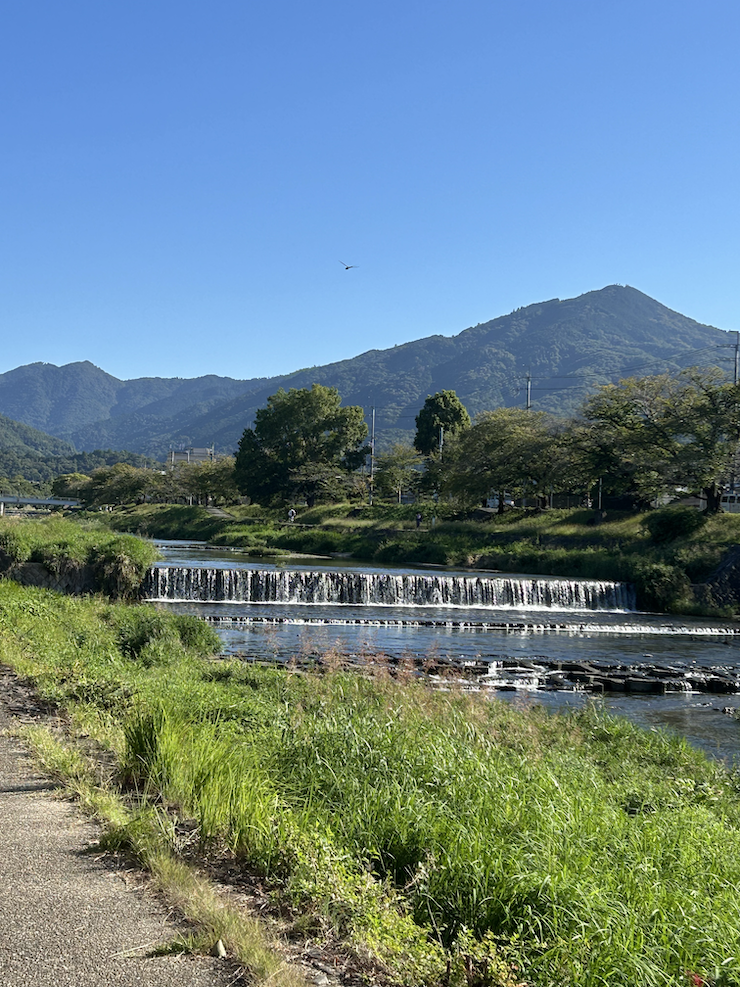Pressure is building from the US for a Plaza Accord 2.0 as part of the…
Kyoto Report 2025 – 3
This Tuesday report will provide some insights into life for a westerner (me) who is working for an extended period at Kyoto University in Japan but who over the years of working here has increasingly began to understand the language and local cultural traditions.
Farming in urban areas
One of the striking things about living in Japan is the scale of life – everything is compact – houses, motor vehicles, shops (many), small-scale manufacturing, etc.
And while there are industrial areas located away from residential areas, in a similar fashion to what I am used to in Australia, it is also common to see a mix of land uses within residential areas – houses, shops, factories, farms etc.
Where I run a lot in the North of Kyoto along the rivers, I often see sites like this within a residential area.
It is a rice farm allotment after harvest with the rice hanging up on the traditional drying racks – 稲木 (hasa) – although they are named differently depending on the region one is in.
This Autumn practice goes back centuries and the 稲木 are usually very large horizontal poles, originally from bamboo stalks.
But it turns out that Japan has historically had a range of drying systems – drying horizontal poles as in the photo and vertical poles with the rice hanging off them in bundles.
In some situations, the farmers used to lay the “cut grain stalks on the field”, but that system was vulnerable to the weather (rot) etc.
Every Autumn in rural Japan one comes across this sort of scene.
By hanging the ears of rice on the hasa and allowing the sun and the wind to dry the grain, the farmers achieve less cracking of the grain and a better flavour.
Rice dried this way tastes better.
However, the practice is in decline because the larger scale farms are increasingly using modern threshing and drying machines.
I have been quite interested in the history of these racks and the drying huts, which are more architectural versions of the simple pole racks.
I read some books on the topic and discovered that the most simple grain drying racks in Europe (a long-standing practice) are very similar to those in East Asia (including Japan).
But as the racks become more architectural, the differences emerge in carpentry techniques and design.
Given my interest in Japanese woodworking and buildings, that was enough to require further research.
And I found that while these structures might appear to be uninteresting there is in fact a whole history of academic research about them – which is one of the reasons I love being an academic – we get to dig into all sorts of things that might typically evade the attention of others.
Reading this book – Cereal Drying Racks: Culture and Typology of Wood Buildings in Europe and East Asia – which was written by Austrian architecture academic Klaus Zwerger and published in English (from the German in 2011) in 2020, provides a massive amount of information.
I won’t write in detail here and if you think you want an entree in the topic I recommend this study.
It is a lot less time consuming that wading through the Japanese language literature, although there are some classic studies by Japanese scholars that I have been reading.
Anyway I am now very observant when I head out in the northern areas of Kyoto to see the variety of small-scale traditional farming techniques.
I plan to stop next time I pass this allotment and see a person – to interrogate them about their work.
This sort of scene though is very common throughout the areas surrounding Kyoto, where dormitory suburbs that have emerged as the population expands mix with traditional farms.
I find that mix very fascinating.
Serenity by the River
This photo was taken early in the morning as I was on one of my usual runs along the Takano River, which runs into the Kamo river at the famous Kamogawa Delta, a little south of where this picture was taken.
I was heading north, on the west bank of the Takano, just past the Kitaoji Bridge and looking towards the mountains, which surround Kyoto.
This sort of experience is daily when we are in Kyoto and sets one up for a great day at the office.
スポーツの日 – Sports Day, October 13, 2025
I don’t run on Mondays in order to give my ailing knees a little respite after a hard weekend of running.
So off to the pool I went planning to do my usual 2 km swim.
It turns out the pool was crowded (surprisingly) and I gave up after 1,000 metres and went home.
The reason was that Japan had its annual – スポーツの日 (Sports Day) – public holiday yesterday, which is held annually every second Monday in October.
The motivation was to remember the “opening of the 1964 Summer Olympics” which were held in Tokyo and its purpose is to “promote sports and an active lifestyle”.
All sorts of organisations – schools, businesses, social groups – hold what are referred to as 運動会 (Field Days), which involve a range of physical activities, including formal athletics carnivals as well as some really odd events such as the 騎馬戦 (Cavalry Battle).
The latter is a very curious field event conducted by high school students where a (Source):
… team of four competitors work together, with three carrying the fourth, who wears a bandana (hachimaki) or hat. The team is defeated if they are knocked over or, more commonly, if their bandana/hat is removed by an opponent.
It is not without controversy and students can end up with serious injuries, including one recorded case in 2003 where a student ended up “quadriplegic after falling from his teammates’ shoulders”.
Local communities have parades and marches, bands play all sorts of music and it achieves its purpose of giving the citizens are break from work.
Unfortunately, it meant the swimming club was overcrowded yesterday.
That is enough for today!
(c) Copyright 2025 William Mitchell. All Rights Reserved.


This Post Has 0 Comments